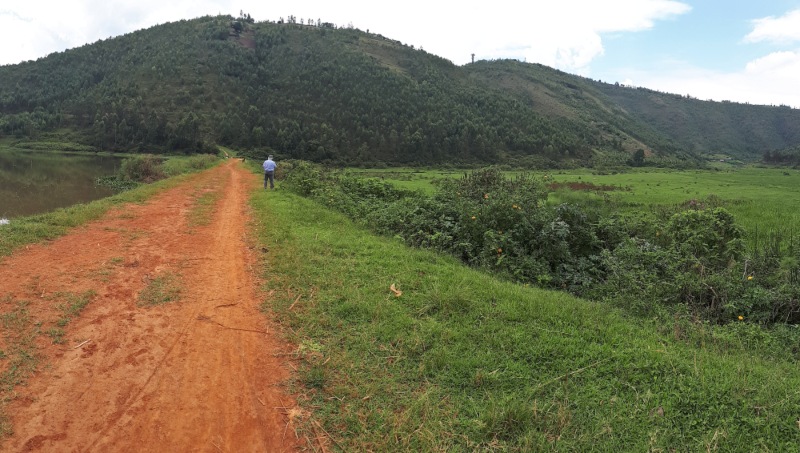The current infrastructure at the outlet of the large Muhazi Lake in Rwanda is highly unstable and causes a risk to the surrounding and downsteam inhabitants. The authorities want to improve this situation by building a new dyke. A feasibility and detailed designs study was performed for this new structure. The design included a detailed hydrological study to assess flood risk and a water resources assessment to assess the dimensions of the dyke and the outlet structures. The project was executed in close collaboration with the authorities in Rwanda and included a training activity in the Netherlands.
At the outlet of the 60 km-long Muhazi Lake there is currently an earth fill dyke which is prone to overtopping or even complete collapse during the wet season. The dyke’s instability causes a potential hazard to inhabitants of the downstream Nyabugogo area, a commercial hub in Kigali town, which threatens lives and properties.
The project consisted of a feasibility and a design phase. For the project, a large number of field- and desktop-tasks were performed. Field-activities included a topographical survey of the project immediate area for design purposes, a detailed mapping of areas around the lake shore sensitive to changes in water level, and a Geotechnical investigation programme due to the complexities related to the peat-soils.
FutureWater conducted a full hydrological assessment of the Lake Muhazi catchment, including the study of flood flows to provide design values, considering climate change, and routing of the lake. Besides, a detailed water resources assessment was performed using WEAP and a study on the operational rule curves, future demands, among others.

The outputs of this analysis fed directly into the design of the Dyke (serving as a dam): the dimensions and outlet structures, performed by the lead partner (Z&A). Besides the project included a Environmental and Social Impact Assessment
Stakeholders were involved actively during all phases of work and several training and capacity building activities were organized.


